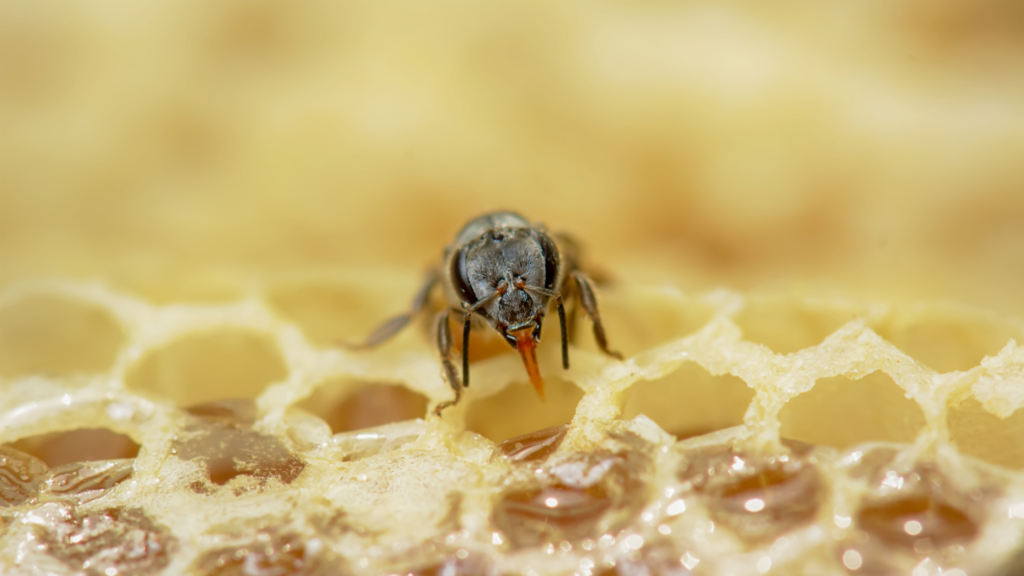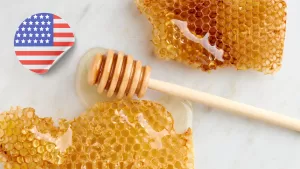The Small Honey Bee, scientifically known as Apis florea, is one of the lesser-known species of honey bees, yet it plays a vital role in the ecosystems of Asia and parts of the Middle East. Despite its size, the Apis florea bee is a remarkable pollinator, and its unique biology and behavior make it a fascinating subject for beekeepers, entomologists, and honey enthusiasts. We will explore the life cycle, habitat, and ecological importance of the Small Honey Bee.
Table of Contents
Toggle- Introduction to the Small Honey Bee (Apis florea)
- Habitat and Nesting Behavior of Apis florea
- Life Cycle and Colony Structure
- The Role of Apis florea in Pollination
- Differences Between Apis florea and Other Honey Bees
- Health Benefits and Uses of Apis florea Honey
- Threats to Apis florea Populations
- Beekeeping and Conservation of Apis florea
- The Future of Apis florea
- Conclusion: The Importance of Apis florea in Our Ecosystem
Introduction to the Small Honey Bee (Apis florea)
The Small Honey Bee, as the name suggests, is the smallest of the honey bee species. It is native to South Asia, commonly found in countries like India, Thailand, and Sri Lanka, as well as parts of the Middle East. Unlike the more familiar Western Honey Bee (Apis mellifera), Apis florea is smaller in size, with workers measuring between 7-10mm in length.
These bees are often referred to as “dwarf honey bees” due to their petite stature. However, don’t let their size fool you—Apis florea is an industrious pollinator, playing a critical role in the pollination of a wide range of flowering plants. In fact, this species is integral to the biodiversity of the regions it inhabits, making it an essential piece in the ecological puzzle.
Habitat and Nesting Behavior of Apis florea
One of the most unique aspects of the Small Honey Bee is its nesting behavior. Unlike the cavity-dwelling Apis mellifera, Apis florea prefers to build its nest in open spaces. These bees typically create a single, exposed comb that hangs from tree branches or shrubs. The combs are much smaller than those of other honey bees and are often constructed in low-lying vegetation. This open-nesting habit makes them more susceptible to environmental threats, including predators and weather conditions.
In terms of habitat, Apis florea thrives in warm climates, particularly in tropical and subtropical regions. They are typically found in rural areas where flowering plants are abundant, which provides them with plenty of nectar and pollen to sustain their colonies. Urbanization and habitat loss pose significant challenges to their populations, but these bees have proven to be adaptable, often nesting in gardens and parks where flowers are plentiful.
Life Cycle and Colony Structure
The life cycle of Apis florea is similar to that of other honey bee species, with a queen, drones, and worker bees forming the three main castes within the colony. The queen is responsible for laying eggs, while the worker bees take on various tasks, including foraging, brood care, and nest construction. Drones exist solely for the purpose of mating with the queen.
The reproduction cycle begins when the queen lays fertilized eggs, which develop into worker bees, and unfertilized eggs, which develop into drones. Once the colony reaches a certain size, it may split in a process known as swarming, where part of the colony, including a new queen, leaves to establish a new nest.
Due to the small size of the colony, Apis florea does not produce large quantities of honey compared to Apis mellifera. However, the honey they do produce is highly valued in traditional medicine and by local communities for its unique flavor and health benefits.
The Role of Apis florea in Pollination
One of the most significant contributions of Apis florea is its role in pollination. These bees are excellent pollinators of various crops and wild plants. In tropical and subtropical regions, Apis florea is known to pollinate fruit trees, vegetables, and ornamental plants. Their small size allows them to access flowers that may be difficult for larger bees to reach, making them highly efficient pollinators.
In addition to their agricultural importance, Apis florea plays a crucial role in maintaining biodiversity. By pollinating native plant species, these bees help support ecosystems and ensure the survival of a wide variety of plant and animal life. This ecological service is especially important in regions where deforestation and habitat destruction threaten local flora.
Differences Between Apis florea and Other Honey Bees
While Apis florea shares many characteristics with other honey bee species, there are some key differences that set it apart:
- Size: Apis florea is significantly smaller than other honey bees, with workers measuring around 7-10mm in length. This makes them the smallest honey bee species in the world.
- Nesting Habits: Unlike Apis mellifera, which nests in cavities, Apis florea builds its nests in the open, often on tree branches or shrubs. The single, small comb is characteristic of this species.
- Honey Production: Due to the small size of their colonies, Apis florea produces less honey than other species. However, the honey is highly prized for its medicinal properties in many cultures.
- Temperament: Apis florea is generally less aggressive than other honey bee species, making it easier for beekeepers to manage. However, their exposed nests make them more vulnerable to predators.
Health Benefits and Uses of Apis florea Honey
Although Apis florea does not produce honey in large quantities, the honey it does produce is highly valued for its flavor and potential health benefits. In traditional medicine, Apis florea honey is believed to have numerous healing properties, including antibacterial, anti-inflammatory, and antioxidant effects. This makes it a popular natural remedy for treating wounds, digestive issues, and respiratory conditions.
The honey’s light, floral flavor also makes it a sought-after delicacy in regions where it is produced. Due to its limited availability, Apis florea honey is often more expensive than honey produced by other species, but its unique taste and health benefits make it worth the investment for many consumers.
Threats to Apis florea Populations
Despite their adaptability, Apis florea populations face numerous threats. Habitat loss due to deforestation, urbanization, and agricultural expansion is a significant concern, as it reduces the availability of nesting sites and food sources. Additionally, climate change poses a threat to these bees, as rising temperatures and changing weather patterns can disrupt their life cycle and foraging behavior.
Another major threat to Apis florea is pesticide use. In many parts of Asia, where Apis florea is common, the widespread use of pesticides in agriculture has had devastating effects on bee populations. Pesticides not only kill bees directly but also weaken colonies by reducing their ability to forage for food and care for their young.
Conservation efforts are essential to protect Apis florea and other honey bee species from these threats. Promoting sustainable agricultural practices, protecting natural habitats, and reducing pesticide use are critical steps in ensuring the survival of these vital pollinators.
Beekeeping and Conservation of Apis florea
In recent years, there has been growing interest in the conservation of Apis florea and the promotion of sustainable beekeeping practices. Small-scale beekeeping with Apis florea can provide a source of income for rural communities, while also supporting local ecosystems through pollination.
Unlike large-scale commercial beekeeping with Apis mellifera, managing Apis florea colonies is often less labor-intensive and requires fewer resources. This makes it an attractive option for small farmers and individuals interested in preserving traditional beekeeping practices.
Conservation organizations and researchers are also working to raise awareness about the importance of Apis florea and other native bee species. By highlighting the ecological and economic benefits of these bees, they hope to encourage greater protection and sustainable management of their populations.
The Future of Apis florea
The future of Apis florea depends on our ability to protect its natural habitat and promote sustainable practices that support its populations. As the demand for honey and pollination services continues to grow, it is essential to recognize the importance of preserving all honey bee species, not just the ones used in large-scale commercial operations.
By supporting conservation efforts and choosing to buy honey from sustainable sources, consumers can play a role in protecting Apis florea and other vital pollinators. Additionally, beekeepers can help by adopting eco-friendly practices that prioritize the health of their bees and the environment.
Conclusion: The Importance of Apis florea in Our Ecosystem
The Small Honey Bee (Apis florea) may be tiny, but its impact on the environment is immense. From its role as a key pollinator to its production of prized honey, Apis florea plays a critical part in the health of ecosystems and agricultural systems across Asia and the Middle East. However, like many bee species, Apis florea faces significant threats from habitat loss, pesticide use, and climate change.
By raising awareness about the importance of this species and promoting sustainable practices, we can help ensure that Apis florea continues to thrive in the wild and contribute to the biodiversity of our planet. Whether you are a beekeeper, a honey enthusiast, or simply someone who cares about the environment, there is much to appreciate about the remarkable Small Honey Bee.



